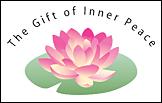Listen to Music | Daily Inspiration
メディテーション用音楽 | 日々の言葉
メディテーション用音楽 | 日々の言葉
|
Meditation Support 瞑想支援(翻訳) The Daily Meditator Newsletters 毎日の瞑想家ニュースレター Learn to Meditate 瞑想の学習(翻訳) Meditation Study Plan 瞑想学習計画(翻訳) The Cure for Meditation Problems 瞑想問題の治療(翻訳) Articles on Meditation 瞑想の記事(翻訳) Meditation Resources 瞑想の資料 "Meditation For Starters" Video Contact Us 私たちへの連絡 (メール宛先)
| Meditation Support 瞑想支援
|
